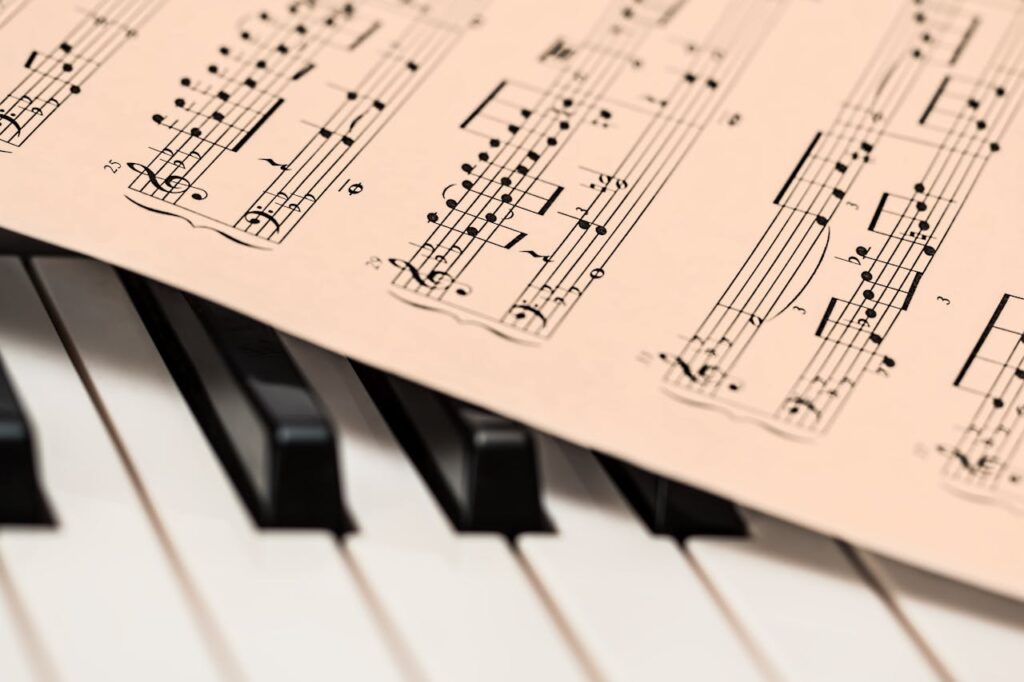Hello, fellow IB Music enthusiasts! As a seasoned IB writer, I’m thrilled to guide you through the intriguing world of the IB Music MLI. For those beginning on this educational path, the Musical Links Investigation (MLI) is a fascinating component of the IB Music program. It challenges students to analyze and compare musical cultures. In my years of experience, I’ve seen how the MLI can expand your musical horizons and critical thinking skills.
Understanding the IB Music MLI
Firstly, let’s clarify what the IB Music MLI is. According to general IB criteria, it’s an in-depth study where students explore the connections between two distinct musical cultures. From my experience, the MLI is a creative opportunity to dig into diverse musical traditions and understand their interplay. This exploration is about identifying differences and appreciating each culture’s unique value to the global musical field.
In the IB Music MLI, students must demonstrate their understanding of musical elements, forms, and cultural contexts. It entails a rigorous examination above the surface, examining the complex nuances of rhythm, melody, harmony, and structure. More significantly, it is about comprehending how these aspects reflect the music’s cultural, historical, and social settings under consideration.
For instance, when comparing a Western classical piece with traditional African music, students aren’t just looking at notes on a page. They’re delving into the story behind the music. What does each piece say about the society from which it emerged? How do the musical choices of the composers and artists reflect their environments and beliefs? These are the types of questions that the MLI encourages students to ponder.
Furthermore, the MLI is an excellent way for students to develop critical thinking and analytical skills. As they dissect and compare musical pieces, they learn to draw informed conclusions and support their ideas with evidence. This process is invaluable, not just in music but in any academic or professional field.
Additionally, the MLI fosters a sense of global awareness and cultural sensitivity. By studying music from various parts of the world, students gain insights into the richness and diversity of human expression. They learn to appreciate and respect how people use music to express their identities, emotions, and histories.
IB Musical Investigation Guide: Structure and Analysis
All IB students must understand the structure of the MLI. The investigation typically comprises two main parts: the written media script (WMS) and the supporting musical links (SMLs):
- Written media script is the heart of your MLI. It should be a well-organized essay where you discuss the musical elements, cultural context, and specific links between the two pieces or traditions you’ve chosen. The WMS is usually limited to 2,000 words, with an introduction, body, and conclusion.
- Alongside your WMS, you should provide musical excerpts, scores, or recordings that support your analysis. These supporting musical links are the evidence for your claims in the WMS and should be carefully selected to highlight the most significant musical connections.
Effective research and analysis form the backbone of your Musical Links Investigation (MLI). In my years of guiding students through the IB program, I’ve learned that deeply exploring your chosen pieces’ historical and cultural contexts can unveil truly fascinating insights. The IB musical investigation guide encourages a focus on aspects like melody, harmony, rhythm, and texture. However, these elements are just the starting point.
Working on your MLI is akin to being a detective. Your mission is to find the subtle connections between musical pieces and cultures. This task requires a comprehensive understanding of the music and the societal, historical, and cultural factors that shaped it.
Start by examining the musical elements in detail. Then, consider the broader cultural context. For instance, examining a piece from the Renaissance might disclose the people’s preferences of the time and the prevalent religious and philosophical beliefs.
Moreover, analyzing these music styles’ cultural impact and legacy is critical. This part of your analysis can enlighten, showing musical traditions’ ongoing relevance and evolution.
How to Write IB MLI: Tips from IB Tutor
Drawing on my extensive experience in the International Baccalaureate, I’m eager to share a structured approach to crafting a successful IB Music MLI. Let’s walk through the steps.
1. Choose Your Musical Pieces Wisely
In my experience, the cornerstone of a compelling MLI is carefully selecting musical pieces. It’s essential to pick pieces that are not only contrasting but also offer rich possibilities for cultural and musical analysis. Look for pieces representing distinct musical cultures or periods, ensuring they provide ample material for a detailed investigation.
2. Conduct Thorough Research
As I’ve learned, thorough research is crucial. It’s about digging into the historical, cultural, and social contexts of the music you’ve chosen. Understanding the background of each piece enhances your ability to draw meaningful connections between them. Gather information from reliable sources, including scholarly articles, music history books, and expert interviews.
3. Analyze Musical Elements
From my standpoint, a detailed analysis of musical elements such as melody, harmony, rhythm, and texture is essential. Examine how these elements are used in each piece and what they signify about the culture and period. This analytical approach helps identify the subtle yet significant links between the pieces.
4. Identify Cultural and Musical Links
According to general IB criteria, the heart of the MLI is identifying and articulating the links between the musical pieces. It involves comparing musical elements and understanding how they reflect the music’s cultural contexts. Look for thematic, stylistic, or historical connections that tie the pieces together.

Get step-by-step guidance on writing an impressive Music EE that meets IB standards and showcases your passion.
5. Organize Your Findings
Organization is key. Start by creating an outline that logically structures your investigation. It should include an introduction that sets the stage, a body where your analysis and findings are detailed, and a conclusion that synthesizes your insights. Maintaining a clear and coherent structure ensures your MLI is easy to follow and understand.
6. Write and Revise
Writing the MLI is a process of refinement. Begin with a draft and revise it for clarity, coherence, and depth. In my experience, seeking feedback from teachers or peers is beneficial, as fresh eyes can offer valuable perspectives. Pay attention to the flow of your arguments, ensuring each point seamlessly leads to the next.
7. Cite Your Sources
In line with IB’s academic honesty policy, citing all your sources is crucial. It adds credibility to your work and shows respect for the original creators and scholars. Be meticulous in following the prescribed citation format.
8. Final Review and Submission
Finally, conduct a thorough review of your MLI. Check for compliance with the IB guidelines, including word count and formatting. Ensure that your investigation is a true reflection of your analytical skills and musical understanding.
Topics to Read:
- How IB Prepares Students for University?
- Can You Retake the IB Exams? Guide for IB Students
- Stress Management and Well-Being for IB Students
- How to Manage Time Effectively as an IB Student
- What Are the Best Apps and Websites for IB Students?
- The Benefits of Pursuing the IB Diploma Programme
- IB vs. National Curriculum. The Benefits of an International Perspective
- What Are the Average IB Acceptance Rates? Insights from an IB Expert
- What Are the IB Internal Assessment Deadlines for 2024?
- What Are the Average IB Scores for US Universities?
- What Are the Average IB Scores for UK Universities?
- Does an IB Diploma Help with College Admissions?
IB Musical Investigation Examples to Consider
Drawing on my extensive background in the IB curriculum, I’ve encountered numerous compelling IB Music MLI examples. These examples demonstrate the diversity of musical cultures and showcase how creatively students can approach this task.
1. Comparing Baroque Music and Jazz
In this investigation, a student might explore the improvisational aspects of both Baroque music and Jazz. Despite their distinct historical periods, both styles share a commonality in the improvisational freedom given to musicians. This MLI would examine how each genre approaches improvisation and the cultural contexts that led to these similarities.
2. Traditional Japanese Music and Western Classical Music
An intriguing MLI could focus on comparing traditional Japanese music, such as Gagaku, with Western classical music. This investigation might examine aspects like melody, harmony, and the use of instruments, highlighting how these elements are shaped by differing cultural aesthetics and philosophies.
3. African Drumming and Latin American Percussion
A student could dig into the rhythmic complexities of African drumming and Latin American percussion, examining how rhythm is used for communication and cultural expression in these traditions. This MLI would explore percussion’s social and historical significance in both cultures.
4. Indian Classical Music and Romantic Era Music
This investigation might focus on emotion and expression in Indian classical music and Romantic-era music. Students could analyze how these genres convey emotion through musical techniques and the musician’s role as an expressive medium in both cultures.
5. Folk Music of the British Isles and American Blues
An MLI here could research the themes of storytelling and social commentary in the British Isles and American Blues folk music. This comparison might show how musical traditions serve as a reflection of societal issues and historical events.
6. Electronic Dance Music and 20th Century Minimalist Music
A contemporary MLI could examine the minimalist tendencies in Electronic Dance Music (EDM) and 20th-century minimalist composers like Steve Reich or Philip Glass, focusing on repetition, phasing, and rhythmic patterns.
7. Scandinavian Folk Music and Appalachian Folk Music
A student might research the shared characteristics of Scandinavian and Appalachian folk music, such as modal melodies and storytelling traditions, considering how these elements evolved in different cultural and geographical landscapes.
Don’t let the stress of the IB curriculum hold you back.
Are you struggling to come up with topic suggestions for your IB Internal Assessment? Or do you need help with the Extended Essay?
Our experienced writers can help you choose the perfect topic and assist you with any assignment.
Tailored to your specific subject and requirements.
Our experienced IB writers are always ready to help.
Simply click:

To Sum It Up
So, the IB Music MLI is a unique and enriching challenge. It’s an opportunity to research and understand the diverse world of music. Remember to stay curious, analytical, and creative as you begin to work on this task. With these tools, I’m confident you’ll make a successful MLI that reflects your musical intellect and creativity. Happy investigating, and remember that you can always contact our experts from IB Writing Service for help.
Nora Spinster




